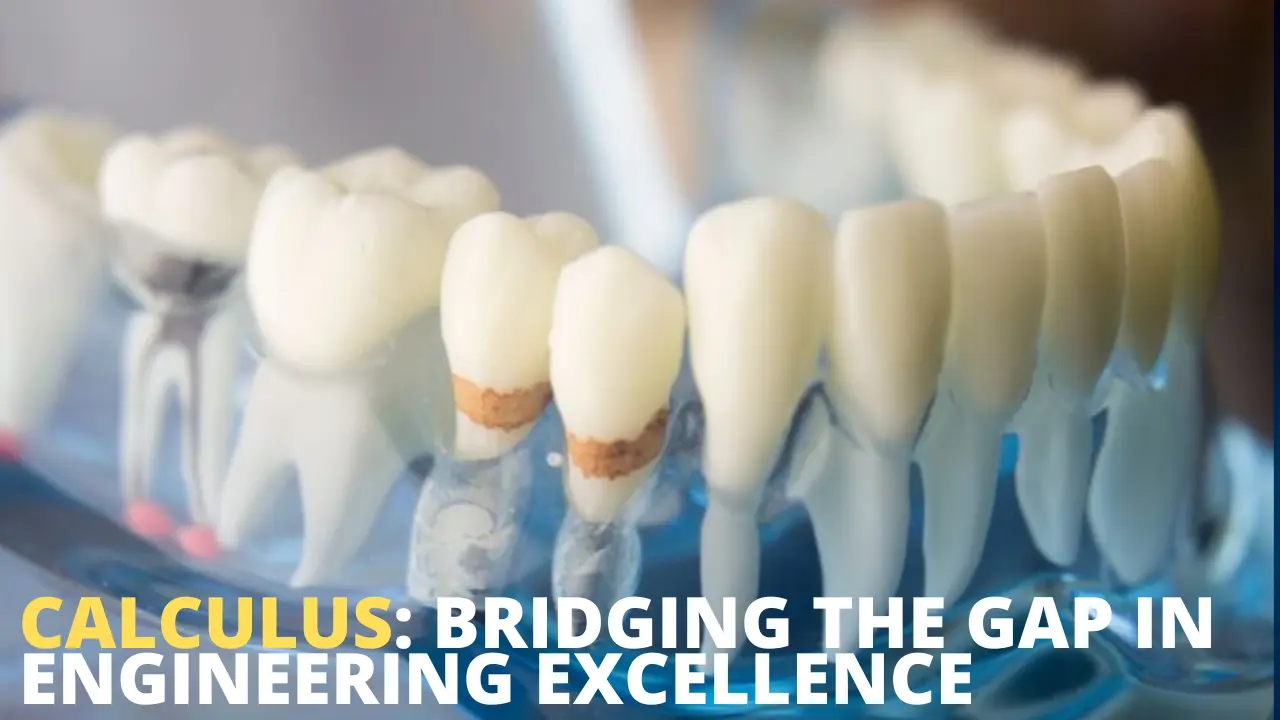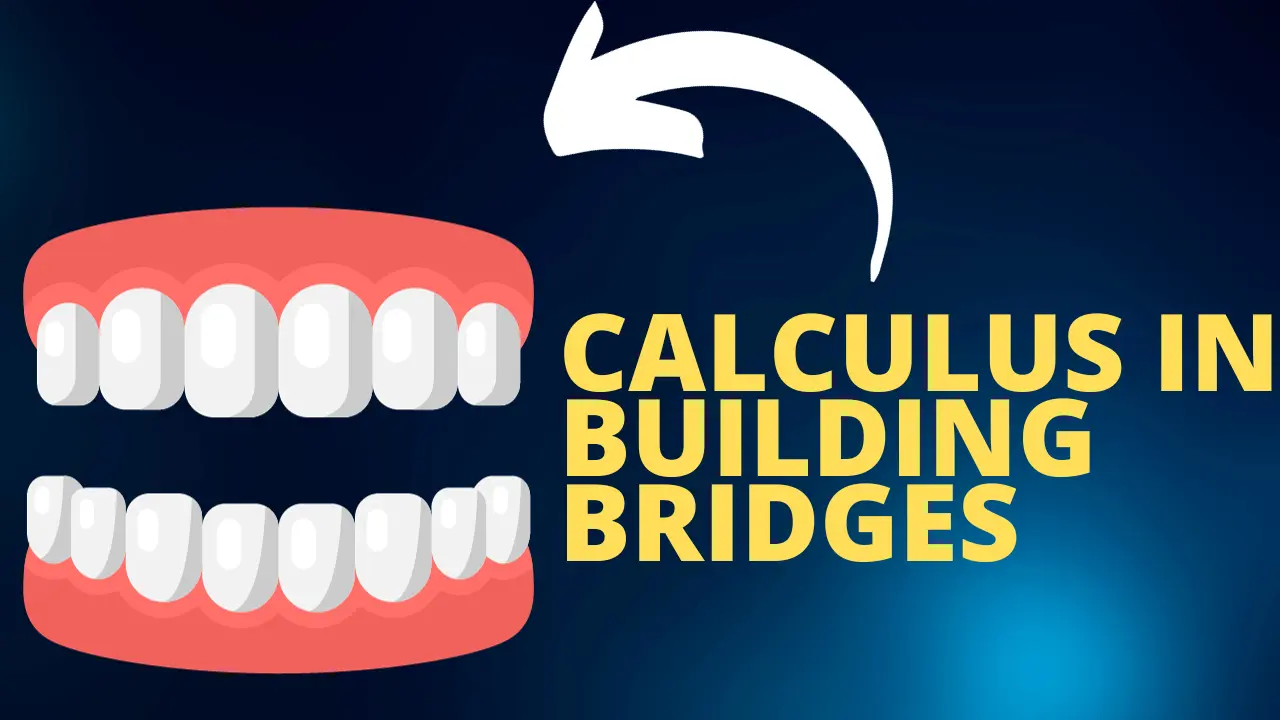Calculus: Bridging the Gap in Engineering Excellence

I. Introduction
A. Definition of Calculus
B. Meaning of Calculus in Engineering
II. The Essentials of Calculus
A. Separation
1. Understanding Subordinates
2. Applications in Engineering
B. Integration
1. Grasping Integrals
2. Viable Use Cases in Engineering
III. Calculus in Building Extensions
A. Underlying Examination
1. Significance of Calculus in Plan
2. Calculus for Burden Appropriation
B. Wellbeing Measures
1. Predicting Emphasize Points
2. Ensuring Underlying Integrity
IV. Genuine Models
A. Well known Extensions and Calculus
1. Brilliant Entryway Extension
2. Millau Viaduct
V. Difficulties and Arrangements
A. Overcoming Calculus Confusions
B. Addressing Engineering Difficulties with Calculus
VI. Eventual fate of Calculus in Scaffold Engineering
A. Mechanical Progressions
1. Artificial intelligence and Calculus in Plan
2. Sustainability Integration
VII. End
Welcome to the fascinating existence where mathematical accuracy meets underlying wonders — Calculus and its indispensable job in the development of scaffolds. In this article, we’ll plunge into the profundities of calculus, exploring its essentials, applications in engineering, and explicitly, its basic job in the intricate course of building spans.
I. Introduction
A. Definition of Calculus
Calculus, got from the Latin word “calculus” meaning little stone, is a part of mathematics that spotlights on paces of progress and gathering of amounts. In less difficult terms, it’s the investigation of continuous change — an essential idea in the realm of mathematics.
B. Meaning of Calculus in Engineering
Engineers use calculus as an incredible asset for understanding and analyzing complex frameworks. From predicting movement to determining underlying dependability, calculus assumes a significant part in shaping the field of engineering.
II. The Nuts and bolts of Calculus

A. Separation
1. Understanding Subsidiaries
At its center, separation in calculus involves finding the rate at which an amount changes. In engineering, this means understanding how factors, for example, speed and speed increase change concerning time.
2. Applications in Engineering
Engineers utilize subsidiaries for different purposes, from optimizing plans to predicting the way of behaving of dynamic frameworks. Calculus outfits them with the devices to pursue informed choices in view of changing factors.
B. Integration
1. Grasping Integrals
Integration, the converse course of separation, involves finding the collected amount from a pace of progress. In engineering, integrals are essential for calculating all out amounts, such as determining the all out distance voyaged or the complete power applied.
2. Viable Use Cases in Engineering
From calculating the complete volume of materials required for development to understanding the general energy utilization of a framework, integrals give engineers important insights.
III. Calculus in Building Extensions
A. Underlying Investigation
1. Significance of Calculus in Plan
In span engineering, calculus assumes a significant part in designing designs that can endure different powers. It assists engineers with predicting how materials will answer under various circumstances.
2. Calculus for Burden Appropriation
Determining the ideal circulation of burdens on a scaffold is significant for ensuring its dependability. Calculus permits engineers to show and dissect the effect of various burdens on the construction.
B. Wellbeing Measures
1. Predicting Emphasize Points
By utilizing calculus, engineers can foresee emphasize points in a scaffold, allowing for the execution of security measures to reinforce those regions.
2. Ensuring Underlying Integrity
Calculus supports ensuring the in general underlying integrity of an extension, preventing possible disappointments and ensuring the security of the people who navigate it.
IV. Genuine Models
A. Well known Extensions and Calculus
1. Brilliant Entryway Extension
The plan and development of the notable Brilliant Entryway Extension intensely depended on calculus. Engineers utilized mathematical models to anticipate wind obstruction, seismic powers, and burden appropriation.
2. Millau Viaduct
The Millau Viaduct in France, one of the tallest extensions all around the world, grandstands the use of calculus in optimizing the construction for strength and security.
V. Difficulties and Arrangements
A. Overcoming Calculus Misguided judgments
Calculus can be intimidating, however understanding its viable applications in engineering can demystify its intricacies. Embracing its job in critical thinking is urgent for aspiring engineers.
B. Addressing Engineering Difficulties with Calculus
From natural contemplations to evolving innovation, engineers face various difficulties. Calculus remains a solid device for addressing these difficulties, providing a methodical way to deal with critical thinking.
VI. Eventual fate of Calculus in Scaffold Engineering
A. Mechanical Headways
1. Computer based intelligence and Calculus in Plan
As innovation progresses, man-made reasoning is becoming increasingly integrated into engineering. The cooperative energy among man-made intelligence and calculus holds gigantic potential for optimizing span plans and enhancing productivity.
2. Sustainability Integration
Calculus will continue to assume an essential part in the sustainable improvement of extensions. From optimizing material use to minimizing ecological effect, calculus gives the structure to engineering arrangements with an emphasis on sustainability.
VII. End
All in all, the marriage of calculus and extension engineering is a demonstration of human ingenuity. From the fundamental principles of calculus to its application in designing sensational designs, it remains a foundation in the domain of engineering. As we plan ahead, the integration of innovation and a pledge to sustainability will further hoist the job of calculus in shaping the scaffolds of tomorrow.
Much of the time Clarified some pressing issues
Is calculus fundamental for all parts of engineering?
Indeed, calculus fills in as a principal device in different engineering disciplines, providing a mathematical starting point for critical thinking and examination.
How does calculus add to connect security?
Calculus assists engineers with predicting emphasize points, examine load conveyance, and guarantee the generally speaking underlying integrity of extensions, contributing to their wellbeing.
Could calculus at any point be applied to limited scope development projects?
Totally, calculus is flexible and pertinent to ventures, all things considered, aiding in plan improvement and underlying examination.
Which job does simulated intelligence play related to calculus in span plan?
Artificial intelligence supplements calculus by enhancing the effectiveness of extension configuration through cutting edge modeling and enhancement, resulting in innovative arrangements.
Is calculus just for specialists, or could beginners at any point understand its ideas?
While calculus can be challenging, understanding its nuts and bolts is available to beginners, and its commonsense applications make it an invaluable expertise for aspiring engineers.
